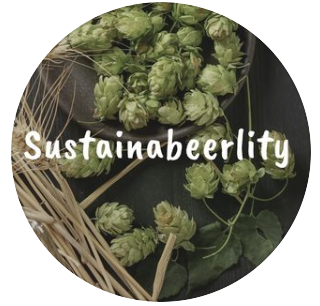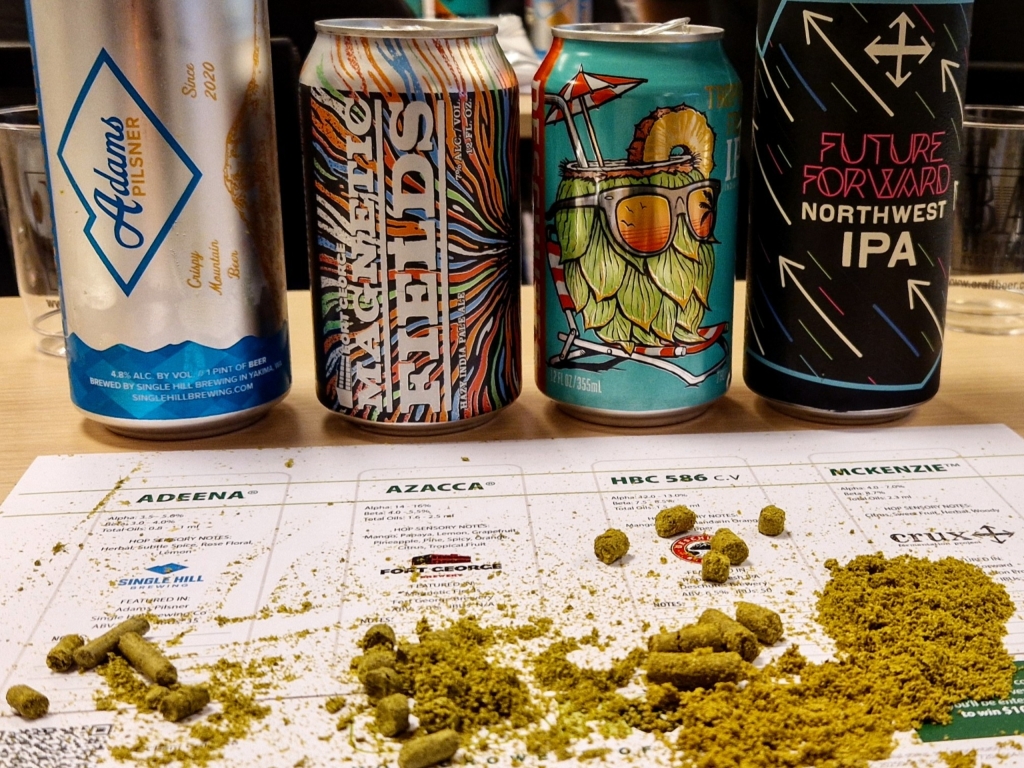The idea for an ingredient series was first conjured up a few weeks ago. It then dawned on me even further when speaking with Arthur Ries of Beerstorming; he told me that often beer drinkers cannot even name the main four ingredients of beer. For the sake of clarity, they are water, grains (typically barley malt), yeast and the one being discussed here, hops.
As I wrote in that article, “to understand the brewing process and the ingredients that a beer is composed of is to begin to understand and appreciate the resource intensity that is behind beer production”. Now, I’m not a brewer. In fact, with both my job and the blog interviews to keep up with, I am as of yet sure when part two of this envisioned ingredient series will come. Nonetheless, I felt it necessary to start discussing the ingredients behind the beer and why there is a need for a level of concern when discussing sustainability.
What are Hops?
Let us start simple. Humulus lupulus, better known as hops, are the ingredient that most modern day craft beer drinks are likely most familiar with. The craft beer boom has introduced a wide range of hop aromas and flavours to consumers through popularised beer styles like the IPA.
Hops are a flower. They grow on a climbing perennial plant belonging to the Cannabaceae family. Hops have been used in brewing for centuries and have played a significant role in the development of beer throughout this period. Prior to hops, beer’s flavour profile would have typically been achieved through the use of gruit: blended mixtures of herbs, spices, and other botanicals. Beers of this style can still be found today, though are far less commonplace.
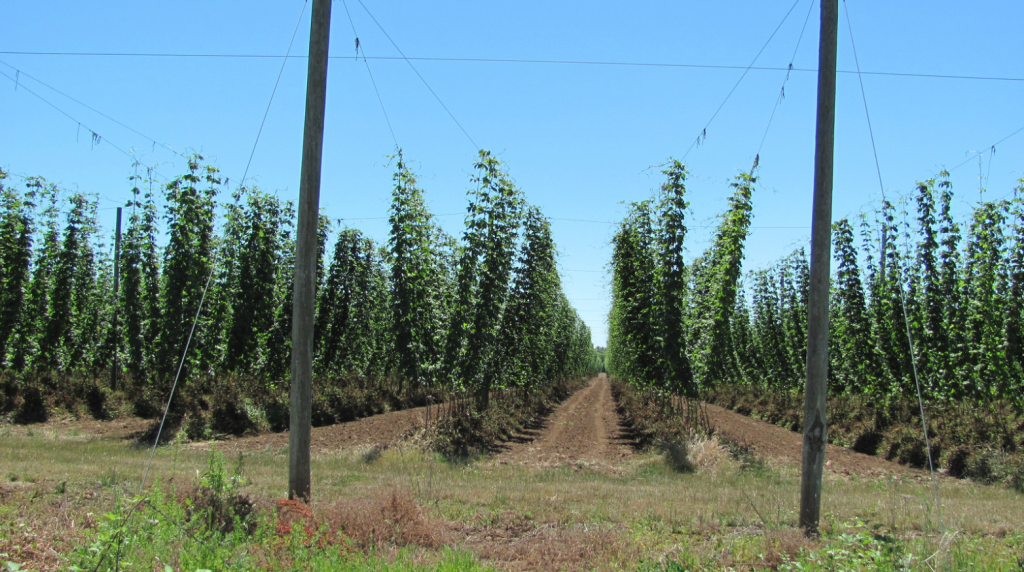
Hops were ultimately adopted as the brewer’s choice for beer production. This is not only due to the flavour profiles that hops add both in terms of bitterness and aroma, but also hops’ ability to preserve beer owing to their antimicrobial properties. Despite the plant having both male and female flowerings, only the female varieties are utilised in brewing.
Anecdotally, in the city I was born, Norwich (UK), “common ale brewers” were banned from using hops in their beverages in 1471 by the city corporations.
Any early resistance that met the flower was defeated and the widespread adoption of hops contributed to the development of distinct beer styles. So what are the properties that makes hops so well suited for beer? Take a look at the figure below!
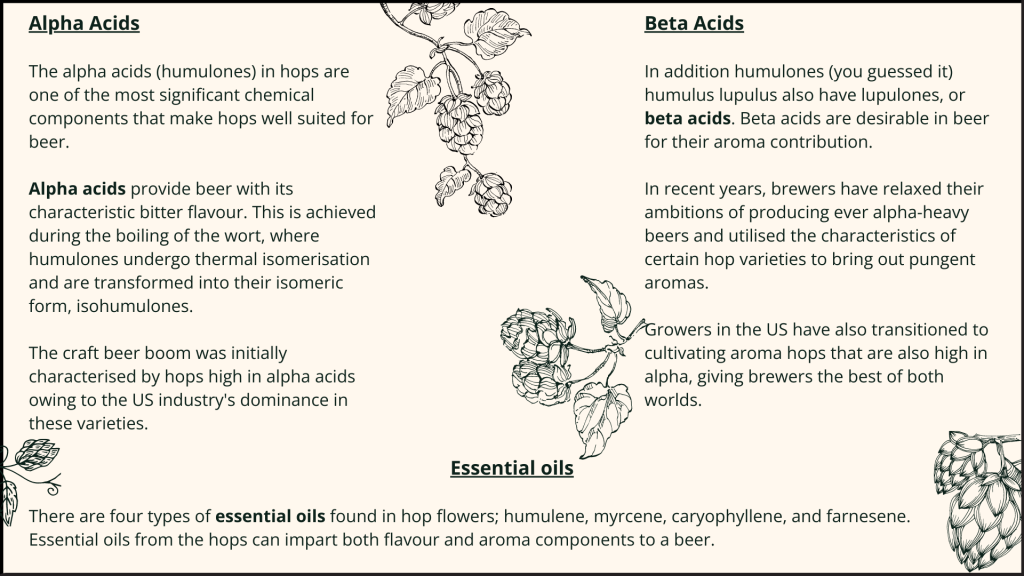
Where are hops grown?
Hops are geographically grown best between 35° and 55° latitude in both the northern and southern hemispheres. The plant typically requires a moderate climate, long days and short nights during growth, a quarter of the year frost free and a cool winter in order to grow efficiently. In the northern hemisphere, this includes countries such as the US, the UK, Germany, Czech Republic, Poland, and China. As referenced a couple times already in this article, the craft beer boom pioneered in the US led hop production to spike in the country. In fact, around 40% of the world’s hop supply comes from the US, with 95% of this production coming from the Pacific Northwest region. Closer to my home in Belgium, hops are grown in 14 EU countries.
How are hops used in beer?
All beer drinkers can tell when a beer tastes ‘hoppy’, but how do our favourite brewers hop their beers? The truth is, there is no one-size-fits-all approach. Traditionally, beers are hopped in three separate stages of the brewing process. The roles of these three stages achieve three different results: bitterness, flavour and aroma. This is not essential however, and beers may be hopped less or more than this depending on the effect the brewer wishes to accomplish. Similarly, the hops may be exposed to the wort for different lengths of time. With trends pushing brewers toward producing beers with finer aromas, in recent years the technique of dry hopping has become ever more popular. The process is primarily used to enhance the aroma and flavour of the beer and is achieved by adding hops to the cooled wort near the end of the boil or after boiling altogether. Importantly, whichever method of dry hopping a brewer opts for does not involve exposing the hops to high heat. For further examples of the various techniques brewers can practice to utilise hops in different ways, check out this article from pro, Jennifer Talley.
What’s the sustainability concern?
Hops are intertwined with the topic of sustainability for two reasons. Firstly, hop production is resource intensive and thus contributes greatly to a given beer’s environmental footprint – as an essential product in the modern day beer, this is cause for concern. Secondly, due to being a volatile plant, climate change puts the production of quality hop cultivation at risk.
It is no lie that hop production is agriculturally intensive. A typical hop farm requires vast amounts of water, fertiliser, and plant-protection products to ensure a substantial crop. Hops require plenty of water and necessitate supplemental irrigation throughout their growth-cycle. Whilst irrigation is energy intensive and can in some cases divert natural water sources away from eco-systems that require them, the sheer amount of water required is often the main reason for worry. Water requirements vary depending on regional climates, soil quality and weather but, as an example, Michigan State University Extension (MSU) recommends at least 6 gallons per plant per day during June and July – this is around 22.71 litres. The lauded and desired US-grown hop pellets a brewer receives typically require around 950 litres of water to per 1 kg of alpha, and around 1,601 litres of water per 1kg of aroma.
Traditional production of hops often requires the use of both chemical fertilisers and pesticides. Fertilisers are used in farming to provide either crops or soils with nutrients tailored to the crop at hand. The three macronutrients of fertiliser application are nitrogen (N), phosphorus (P), and potassium (K). Hops typically require around 100-150 pounds (54-68kg) of nitrogen per acre, contributing a significant footprint in the chain of hop production. In fact, the Hop Growers of America (HGA), a US trade association, assessed in 2022 that 22% of total greenhouse gas emissions for whole hops stemmed from chemical inputs alone – the majority of which are consequential of fertiliser production and application.
Furthermore, owing to the hop’s susceptibility to both pests and diseases, pesticides are often required throughout the production cycle too. Hops are vulnerable to various threats to its production and crops can be spoiled by invasive species or plant diseases that enter a hopyard. To exacerbate this point in a politically charged statement from an ECR Member of the European Parliament, Alexandr Vondra stated that the European Commission’s proposal to cut the EU’s pesticide usage by 50% would cause hop production to cease to exist in his homeland of Czechia as well as Poland. Whilst pesticides contribute less to a hop’s carbon footprint than fertilisers, certain pesticides are attributed with the loss of biodiversity (as they may also harm non-targeted species – including pollinators), soil degradation and can pose significant health risks to farm workers if not applied in safe conditions. Residues of these pesticides may also be present in the beer consumed.
Thus farm, the article has focused on the agricultural production of hops. However, hops also require drying, baling, storing, processing, packaging and transporting after they are cultivated.
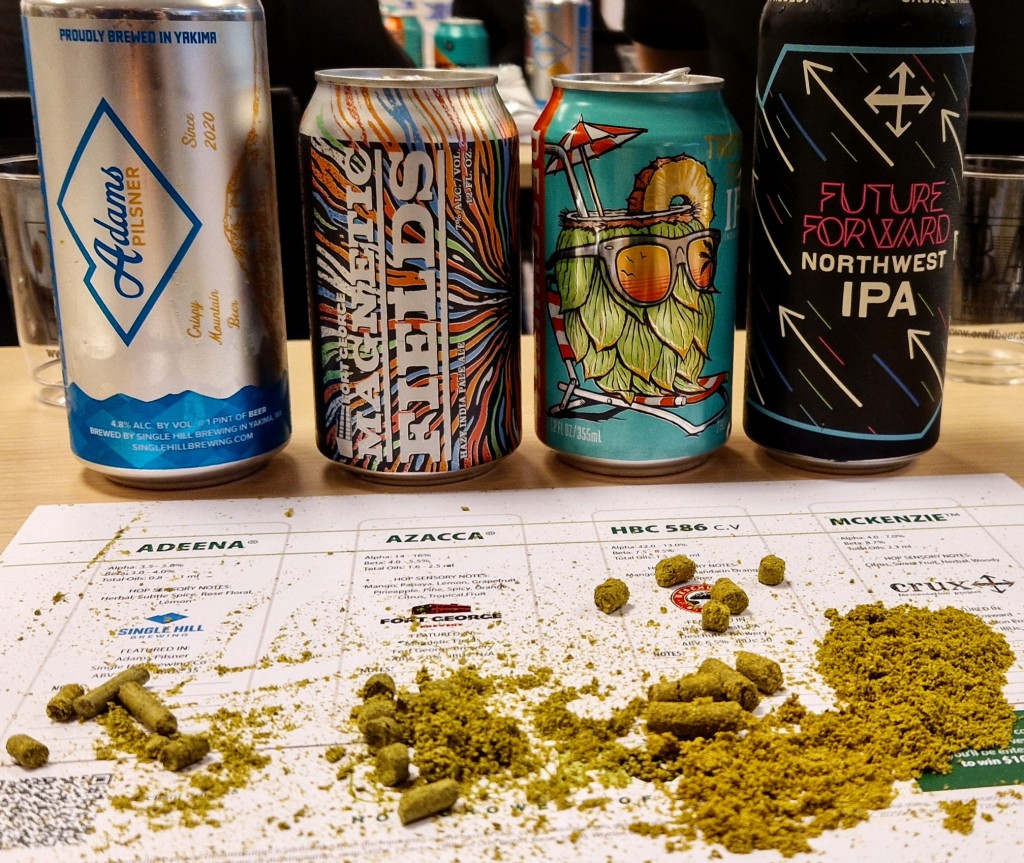
Post-harvest, hops are predominantly processed into pellets. Pellets hold many advantages, such as a longer a shelf-life, less space utilised when transported, and a better retention of alpha acids. Nonetheless, it is worth noting that these advantages also account for around 8% of the total hop cycle’s greenhouse gases.
Despite the transportation gains of pelletising hops, hop pellets are still transported all around the globe so that brewers can utilise different hops varieties and the flavours of different regions. From the US to Australia, from Europe to China, from Australia to the UK, from Ethiopia to New Zealand and California and beyond, hops are packaged and shipped to various destinations ready to be brewed. A 2008 assessment of New Belgium‘s Fat Tire Ale found that the transportation of hops from England to Fort Collins, Colorado contributed roughly 0.7g CO₂ to a 6-pack of the beer’s overall carbon footprint.
On the other side of the coin exists the reality that hop production is threatened by climate change. 2022 saw production declines in major hop producing nations. The world’s largest hop supplier saw its production down 12%, and here in the EU production fell by 28% according to farming union Copa-Cogeca. Volatile weather conditions including a cold spring in the US, followed by hot and dry summers in both continents caused the supply of hops to see a worrying decline. As hops are a volatile plant and require stable climates for efficient growth, adverse weather events and less predicatable climates in the future put their production at further risk.
What solutions are being offered?
Hop cultivation is not ringing any alarm bells that traditional agriculture is not also ringing. Thus, it is no surprise that most solutions to the aforementioned concerns are requiring the same thought. For instance, precision agricultural techniques are being explored by global beer brand Asahi in the hop-growing region of Saaz, Czechia. Precision agriculture utilises technology and data-driven methods to allow producers to intervene with precision, boosting efficient use of farming inputs such as water, fertiliser and/or pesticides. Additionally, techniques such as integrated pest management are being further developed in the field of hop production to encourage natural pest control practices and to limit where possible the need for chemical intervention. These practices include crop rotation (as hops are typically grown as a monoculture), the encouragement of organisms (including predatory mites or lady bugs) that naturally prey on pests of hops, and good cultivation practices (such as pruning second or third year plants).
Beyond Asahi, many other real life examples exist, though it would be impossible to list them all. In Spain, a hydroponic hop production facility recently claimed to produce hops with a 15x reduced environmental footprint to its traditionally cultivated counterpart. Additionally, due to be being grown indoors, no pesticides are required. The project has the backing of the world’s largest brewer and beer company, AB InBev.
Beyond mentioning the comically named Brouwerij ‘t Verzet beer NoAH (standing for No American Hops), I would be remiss if I did not end on the recent news of Gipsy Hill brewery producing the world’s first offset-free carbon-negative beers. Whilst the whole process is long overdue an article of its own here on this blog, one practice utilised to achieve these brews is deserving of the spotlight here. The brewery invested heavily in in-house processes that allowed them to recapture the spent hops after brewing and reused them. The practice not only prevents wastage, but gets more bang for the [carbon emissions]! For the past few weeks I have been enviously witnessing many on my social media enjoying these twocarbon negative brews, Swell (a lager) and Trail (a pale ale), back in London – particularly at this year’s rendition of the London Craft Beer Festival this passing weekend. Gipsy Hill, I’m coming for you!
The point of this article has been to shed some light on the ingredient that most people consider the star of beer and discuss its current environmental concerns, both as a contributor to and victim of the climate crisis. With consumers looking for ever-more sustainably produced beers, as well as the necessity to protect hop cultivation from the effects of climate change, the hop industry will have to continue to evolve and innovate – as too will brewers.
Cheers to a hopeful future of a hoppy and healthy planet!
